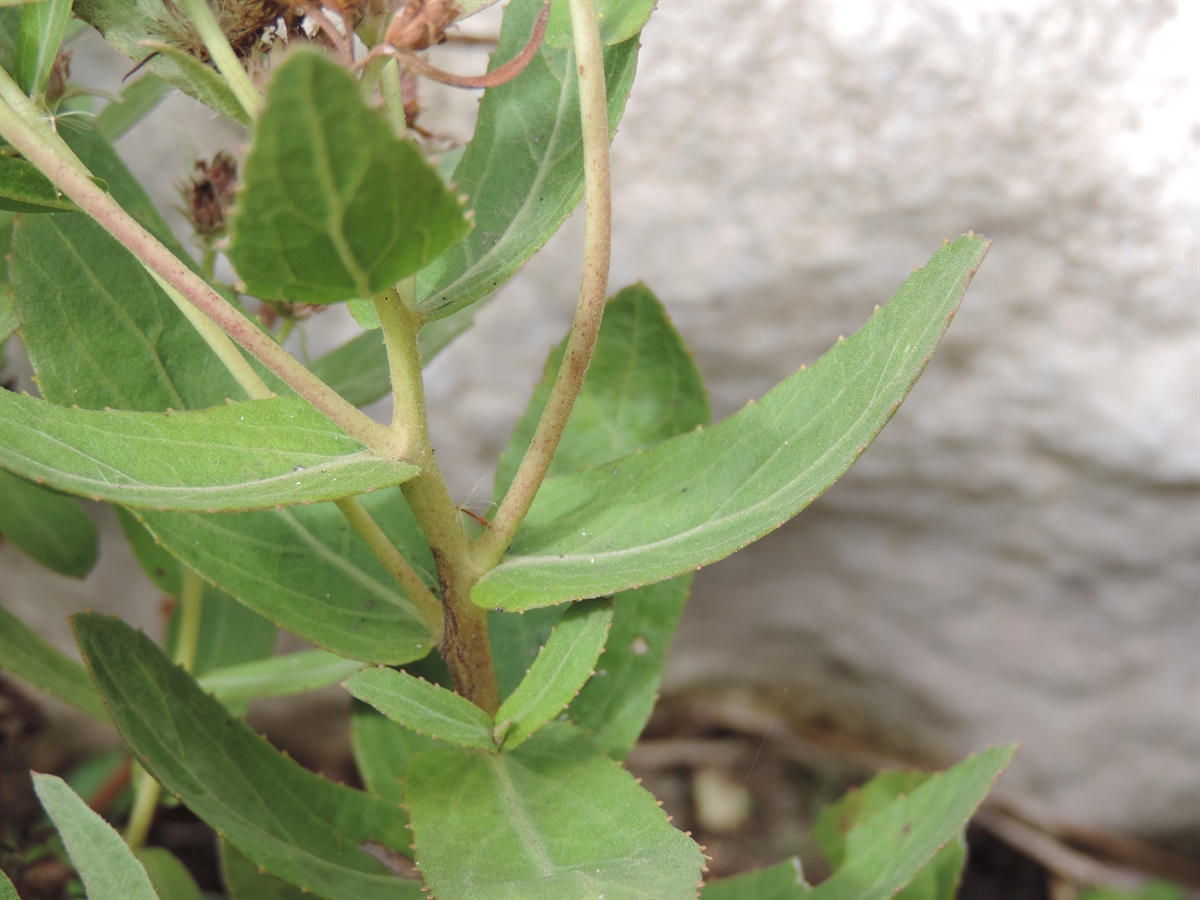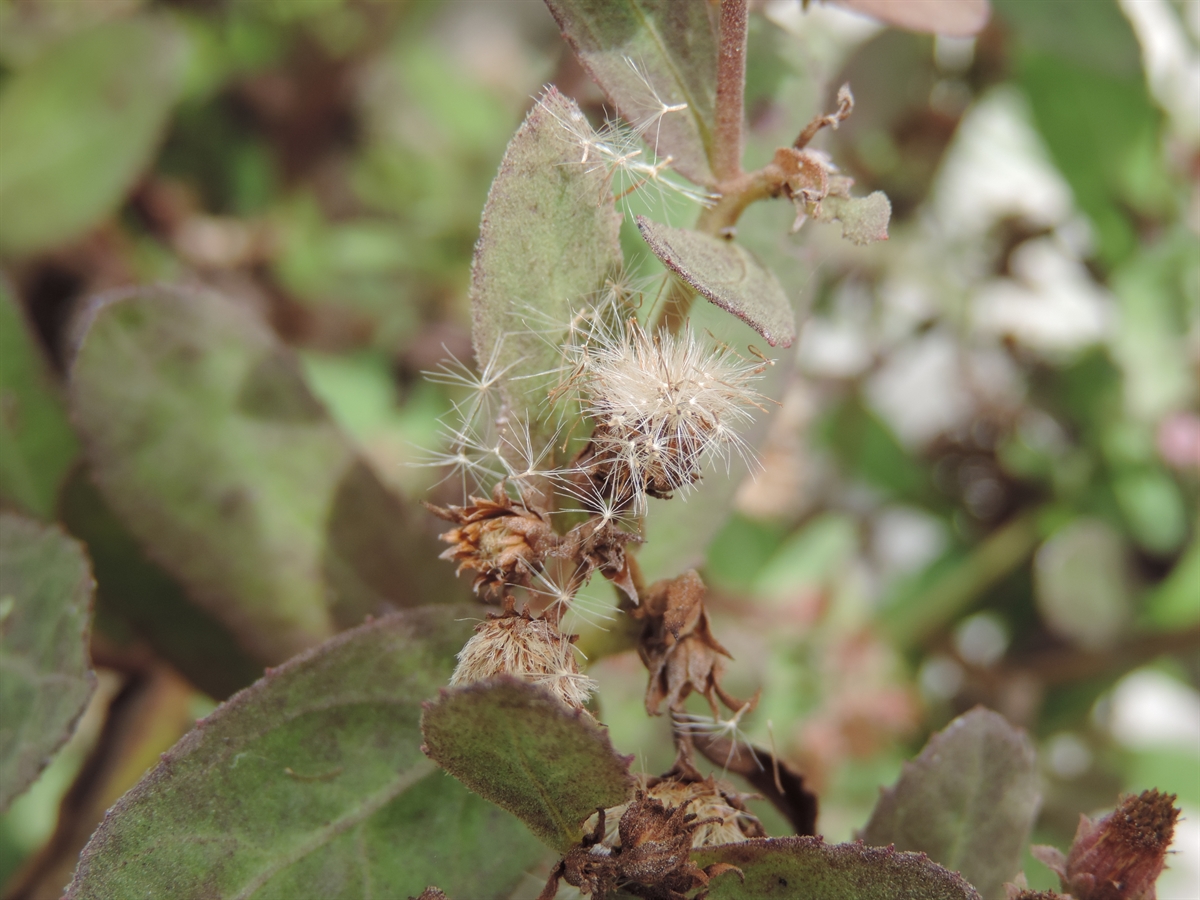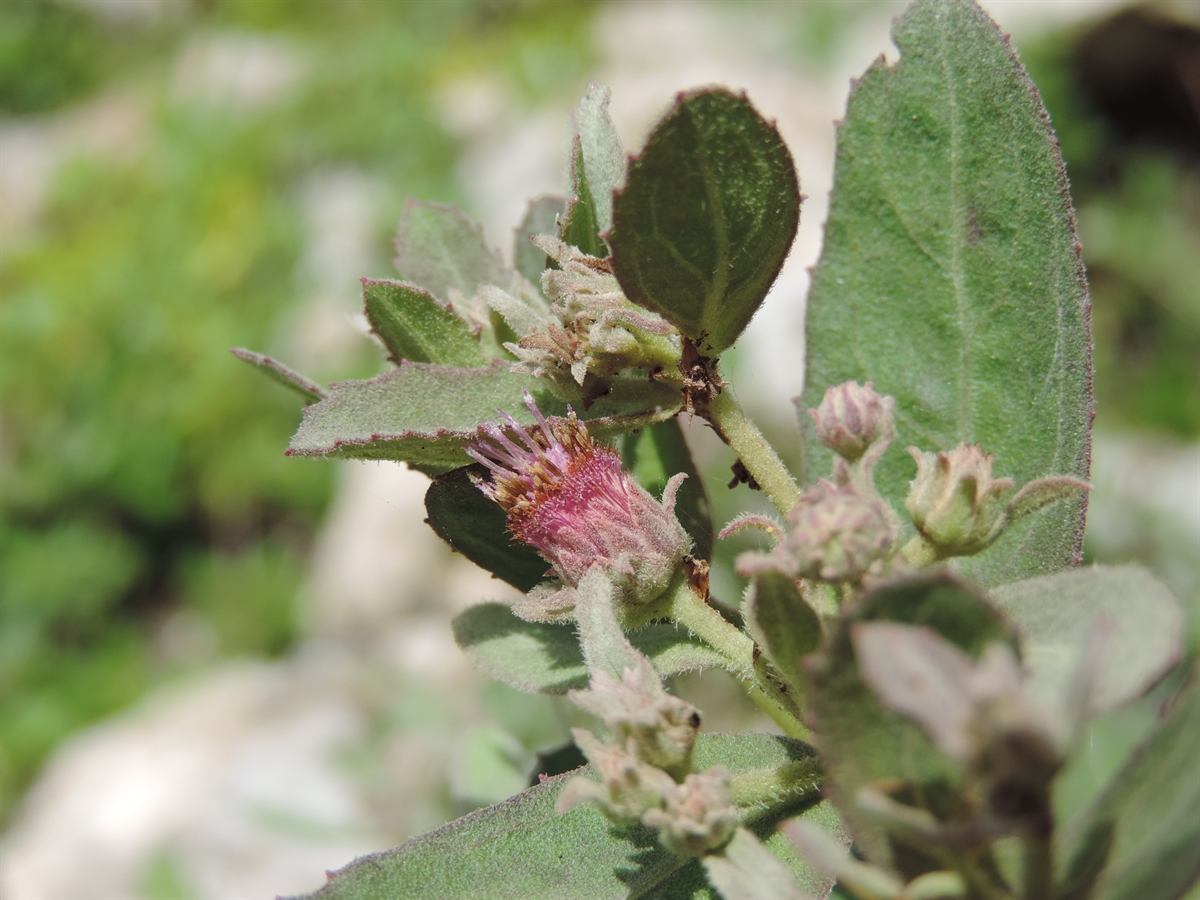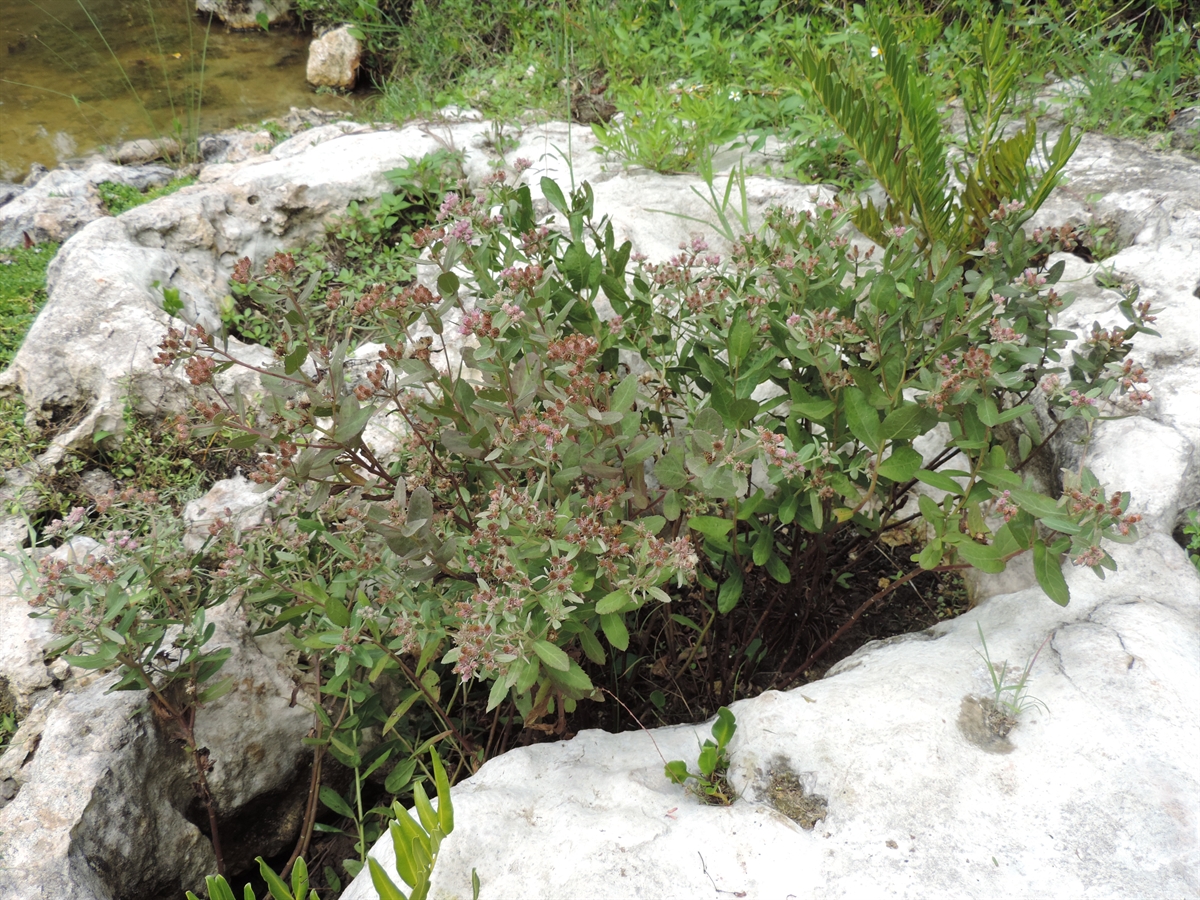Habit: Pluchea rosea grows as a many branching shrub to 2 meters in height. The vegetative growth is covered with a fine glandular pubescence particularly on the abaxial leaf surfaces. The leaves are arranged alternately, sessile, to 10 cm in length, oblong to obovate to elliptical with a notched margin and acuminate leaf apex. The leaf base is auriculate and clasping the stem.
The complete, perfect, actinomorphic flowers are arranged in corymbs of heads. The heads are subtended by a series of involucral bracts with slightly curved tips. The calyx is modified as a ring of hairs (pappus). There are both perfect and imperfect (carpellate) flowers in the heads. The perfect flowers are in the center and the imperfect flowers are arranged around the edge of the heads.
The incomplete, imperfect flowers have 3 pink fused petals and no stamens. The complete, perfect flowers have a corolla with 5 fused, pink petals. There are 5 stamens. In both types of flowers the ovary is inferior with a single locule but only the imperfect flowers have functional ovules. The fruit is an achene at maturity that retains the modified calyx (pappus).
Habitat: Pluchea rosea grows in Human Altered environments (roadsides, abandoned fields) as well as Fresh Water Wetlands.
Distribution: Pluchea rosea occurs in the northern and central island groupings of the Lucayan Archipelago, North America and the entire Caribbean region.
Medicinal/Cultural/Economic usage: Pluchea rosea is not known to be used medicinally in the Lucayan Archipelago.




